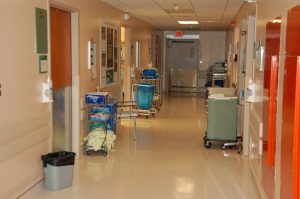This website uses cookies so that we can provide you with the best user experience possible. Cookie information is stored in your browser and performs functions such as recognising you when you return to our website and helping our team to understand which sections of the website you find most interesting and useful.

Susan E. Mazer, Ph.D. Blog
Thoughts and ideas on healthcare
Hi, and welcome to my blog! I'm Susan E. Mazer -- a knowledge expert and thought leader on how the environment of care impacts the patient experience. Topics I write about include safety, satisfaction, hospital noise, nursing, care at the bedside, and much more.
“Do No Harm” is Not Enough Anymore for Patient Safety
February 7, 2014
 Florence Nightingale was not only the Mother of Modern Nursing; she also was the Mother of Healthcare Design and Patient Safety. She demanded ongoing documentation of patient progress and invented the nurse call system.
Florence Nightingale was not only the Mother of Modern Nursing; she also was the Mother of Healthcare Design and Patient Safety. She demanded ongoing documentation of patient progress and invented the nurse call system.
She actually saw all of this as nursing — taking responsibility for the sick and preventing unnecessary suffering and death. Nightingale’s work came before all of today’s technology and bureaucracy. Simply put, every decision and practice has the patient’s life at stake.
In Notes on Hospitals, Nightingale begins with the following declaration: “It may seem a strange principle to enunciate as the very first requirement in a Hospital that it should do the sick no harm.”
Nightingale goes on to justify the statement by reporting that the mortality rates of patients in the hospital are much higher than those whose care was done outside the hospital. Thus, the patient safety and quality movement was born.
However, safety, quality, mortality, and morbidity all hung together, as she saw none of them in isolation from the other. From her perspective, nothing less than the patient’s life was at stake.
In 2014, the concept that patient safety is somehow separated or distinct from other aspects of care is totally backward. Clearly, patients who are unsafe are at heightened risk in every aspect of their care.
And, if hospital administrators tolerate this separation, whether real or imagined, the weight of discharge instructions or treatment is also held in the balance. Why would a patient or family member trust what is being told to them if their circumstances, which are controlled by the hospital, are unsafe or perceived to be so?
So much focus on HCAHPS and so little focus on the lived outcome of a hospitalization. Lack of cleanliness indicates lack of safety. Noise indicates lack of respect and consideration. Waiting time indicates neglect. And on and on and on.
How can we even think that the HCAHPS questions live in isolation from each other — that one does not heavily inform the next? There is an epidemic of silo-thinking that mistakenly implies that one silo can excel while another fails. The patient lives one experience regardless of how the hospital culture divvies up the various tasks.
My own frustration comes from my experience as a patient, family member, and concerned friend. I can’t be alone in adding it all up to figure out what it says about my own risks and prognosis as a healthcare consumer.
So, “Do no harm,” at this point, is not good enough in the complexity of the current healthcare system unless it is purposefully part of each and every aspect of the patient experience.
P.S. If you like this post, please do me a favor and share on LinkedIn, Twitter, Facebook, etc. Also to get automatic notices when a new post is published, subscribe (upper right). No spam – just great content. Thanks!










